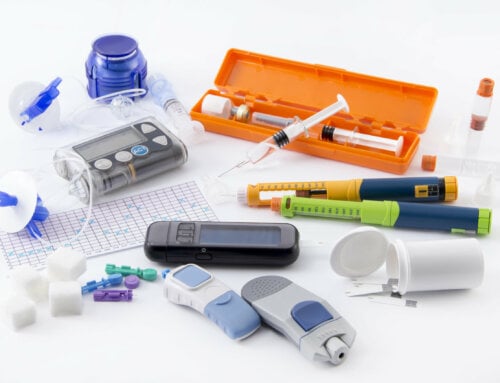When you have diabetes, it is helpful to keep track of your fitness efforts. Using a tracking device lets you know how far you have walked, run or moved around throughout the day. Discover the incredible evolution of fitness trackers, from the Omron pedometer to modern devices such as the Fitbit and beyond.
What are Fitness Trackers?
Fitness trackers are used to measure your progress when walking, running or moving. They can also help with motivation. The concept for the original mechanical pedometer was envisioned by Leonardo DaVinci. In 1780, Abraham-Louis Perrelet created the first pedometer. It measured steps and distance while a person walked. Thomas Jefferson introduced the pedometer to the United States. The pedometers used today are often electronic and count each step taken. Originally, they were clipped onto your belt or waistband. Updated pedometers use software and electronics that can determine how each user’s steps vary for greater accuracy. Step counters are also being integrated into smartphones through Apps or wearable devices that can sync with a smartphone.
Step Tracking Devices and Diabetes
Clinical studies have shown wearing tracking devices can help increase physical activity, reduce your body mass index and lower your blood pressure. These are all major concerns for people with diabetes. Many researchers recommend a daily goal of 10,000 steps. However, this varies for people with chronic diseases, such as diabetes and heart disease. Consult with a physician to help you determine how far you should walk and at what rate you should progress.
Fitness Trackers Comparison: Fitbit, Garmin Vivo & Apple Sports Armband
The Fitbit is a wearable tracking device that is worn like a bracelet. Fitbit also makes the Zip, which is clipped to your clothing. Fitbit devices range from everyday fitness to active and performance fitness goals. Users can sync their stats into their wireless devices and post them on fitness forums where they can connect with others to help fuel their goals. By tapping the display, users can see the date and results of their activity. The Fitbit tracks steps, distance, calories burned and how many active minutes you have each day. Certain models also track the time, your heart rate and sleeping patterns. This is helpful for people with diabetes to ensure they are maintaining a healthy heart rate and getting proper sleep each night.
Garmin is known for making innovative GPS devices. Now they also make step tracking devices with added features. The Garmin Vivo active is designed to look like a watch and is worn around your wrist. This handy tracking device features a GPS to track cycling, running and swimming with live distances and pace. It also keeps track of daily steps, provides notifications and has access to Garmin Connect. This level of support can help people with diabetes meet their self-management goals.
Apple is known for making cutting edge devices including the iPhone with innovative features. Apple products are an integral part of the health and fitness movement. The step tracking Sports Armband integrates with devices such as the iPhone 6. Apple offers several step tracking devices and heart rate monitors as well as the affordable Misfit, which is comparable to the Fitbit. All these devices are made to integrate with iPods and the iPhone so users can keep track of their fitness progress.
Wearable devices tend to be more costly, offer an array of features and can be integrated with your mobile devices. However, they have not been found to be more accurate than a basic, budget-conscious pedometer. Choose a step tracking device based on your lifestyle, budget and goals to help you get the most from your workouts.







Leave A Comment